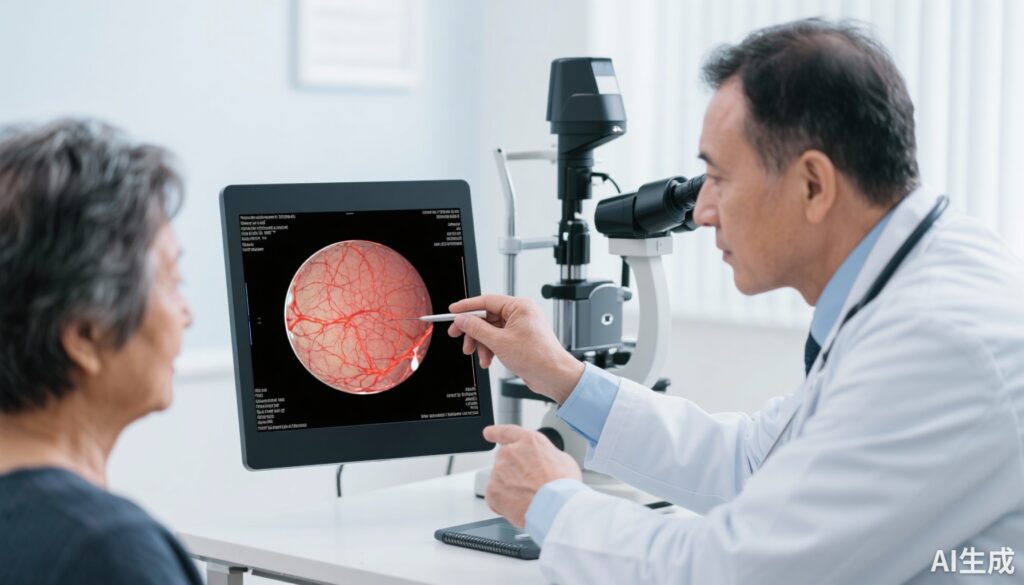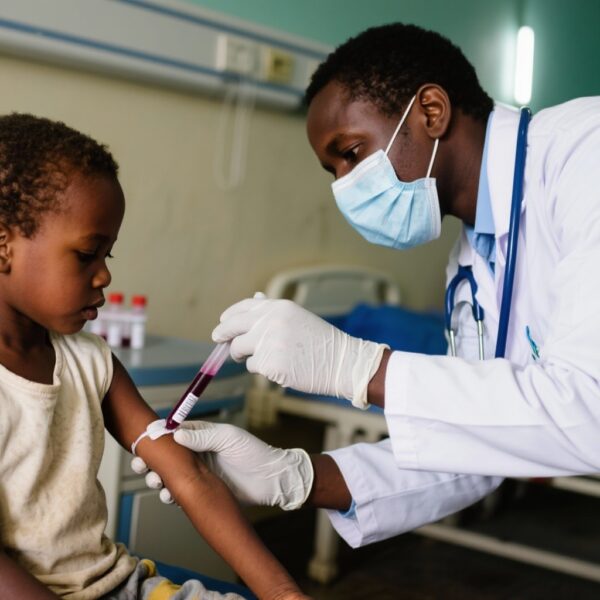Introduction
Diabetic retinopathy (DR) remains one of the leading microvascular complications of type 2 diabetes mellitus (T2DM), often impairing vision and potentially leading to blindness. Despite advances in diabetes care, the long-term natural history and risk factors contributing to DR incidence require continuous investigation to refine prevention and treatment strategies. The Skaraborg Diabetes Register study in Sweden prospectively evaluates DR progression up to 24 years following T2DM diagnosis, providing valuable data on cumulative incidence and clinical predictors in a real-world setting.
Study Background
DR contributes significantly to visual morbidity worldwide, especially in populations with increasing diabetes prevalence. Early identification of patients at high risk for sight-threatening complications is critical for timely intervention. While shorter-term studies have highlighted hyperglycemia and hypertension as key modifiable risk factors, long-term observational data are essential to understand disease trajectories and temporal trends in DR presentation. This study addresses the clinical burden by investigating the incidence of any diabetic retinopathy (DR) and sight-threatening diabetic retinopathy (STDR) in a well-defined Swedish cohort diagnosed between 1996 and 2004.
Study Design and Methods
This observational cohort study enrolled 2267 patients from the Swedish Skaraborg Diabetes Register diagnosed with T2DM between 1996 and 2004. Inclusion criteria included diagnosis at age ≤70 years and absence of DR at the initial retinal examination. Baseline clinical covariates documented at T2DM diagnosis included age, smoking status, body mass index (BMI), blood pressure, HbA1c, high-density lipoprotein cholesterol (HDL-C), triglycerides, C-peptide levels, and use of antihypertensive medications (as a surrogate for hypertension presence).
Patients underwent regular ophthalmologic examinations at Skaraborg Hospital’s Department of Ophthalmology through 2021, with DR grading extracted from medical records. The primary endpoints were the cumulative incidence of any DR and sight-threatening DR (STDR). Kaplan-Meier analysis estimated cumulative incidence over time, and multivariate Cox proportional hazards models identified independent risk factors for DR development.
Key Findings
Over a mean follow-up period of 12.8 ± 5.8 years (maximum 24 years), 926 patients developed DR, and among these, 101 progressed to STDR.
The cumulative incidence of DR was 29.0% at 10 years and rose to 67.6% at 20 years post-diagnosis, indicating a substantial risk accumulation over time. STDR incidence was comparatively lower, 1.4% at 10 years and 11.4% at 20 years, highlighting a smaller yet clinically critical subset at risk of severe vision loss.
Multivariate Cox regression revealed several significant associations:
– Higher HbA1c at diagnosis was independently linked with increased risk of DR progression (hazard ratio [HR] 1.02 per 1 mmol/mol increase; 95% confidence interval [CI], 1.01 to 1.02). This underscores poor glycemic control as a continuous risk modifier.
– Antihypertensive treatment at diagnosis correlated with a heightened DR risk (HR 1.26; 95% CI, 1.08 to 1.47), serving as a clinical proxy for hypertension, a known microvascular risk factor.
– Older age at diagnosis was associated with a slightly reduced risk of developing DR (HR 0.98 per year increase; 95% CI, 0.97 to 0.98), possibly reflecting differences in disease phenotype or survival bias.
– Diagnosis in the later cohort period (1999-2004 vs. 1996-1998) was linked to approximately 42% lower DR risk (HR 0.58; 95% CI, 0.51 to 0.66), which may reflect improvements in diabetes care, earlier detection, or cohort characteristics over time.
Other baseline factors such as smoking status, BMI, lipid parameters, and C-peptide levels were not reported as significant after multivariate adjustment.
Expert Commentary
This extensive longitudinal study enriches our understanding of the natural history of diabetic retinopathy in type 2 diabetes, emphasizing the enduring impact of hyperglycemia and hypertension management at disease onset. The significant reduction in DR risk in patients diagnosed after 1998 suggests potential benefits from evolving clinical guidelines, greater awareness, and improved therapeutic regimens introduced during that period.
The association of antihypertensive treatment with DR risk aligns with hypertension’s recognized role in microvascular complications; however, medication use as a proxy may confound direct causality. The modest protective effect of advancing age at diagnosis requires further exploration but may relate to varying disease phenotypes or competing mortality risks in older adults.
Limitations include potential residual confounding, lack of detailed longitudinal glycemic and blood pressure control data, and the observational design which cannot definitively establish causality. The cohort’s regional nature may constrain generalizability to populations with different ethnic, socioeconomic, or healthcare environments.
Future research incorporating dynamic risk factor monitoring and integrating newer therapeutic advancements will be critical to continue reducing the burden of DR.
Conclusion
The Skaraborg cohort study demonstrates a high cumulative incidence of diabetic retinopathy over 24 years in patients with T2DM, with a notable proportion developing sight-threatening stages. Key modifiable factors at diagnosis—namely elevated HbA1c and hypertension as inferred by antihypertensive therapy—significantly increase the risk for DR progression. Conversely, older age and later diagnosis periods correlate with reduced risk, reflecting possible improvements in early diabetes management.
These findings reinforce the importance of rigorous glycemic and blood pressure control early after T2DM diagnosis to mitigate long-term ocular complications. Regular retinal screening and integrated cardiovascular risk management remain crucial components of comprehensive diabetes care to prevent vision loss and improve patient outcomes.
Funding
The study was supported by grants from Swedish research foundations and internal hospital funding consistent with regional diabetes research initiatives.
References
Garberg G, Bengtsson Boström K, Hjerpe P, Ayala M, Lövestam Adrian M, Andersson T. Progress of diabetic retinopathy up to 24 years in patients with type 2 diabetes in Sweden: a cohort study from the Skaraborgs Diabetes Register. BMJ Open Diabetes Res Care. 2025 Oct 15;13(5):e005356. doi: 10.1136/bmjdrc-2025-005356. PMID: 41101793; PMCID: PMC12530405.
Additional supporting literature:
– Yau JWY, et al. Global prevalence and major risk factors of diabetic retinopathy. Diabetes Care. 2012;35(3):556-564.
– UKPDS 33. Intensive blood-glucose control with sulphonylureas or insulin compared with conventional treatment and risk of complications in patients with type 2 diabetes. Lancet. 1998;352(9131):837-853.
– Cheung N, Mitchell P, Wong TY. Diabetic retinopathy. Lancet. 2010 Jul 10;376(9735):124-136.



